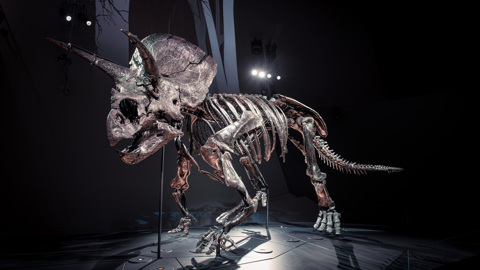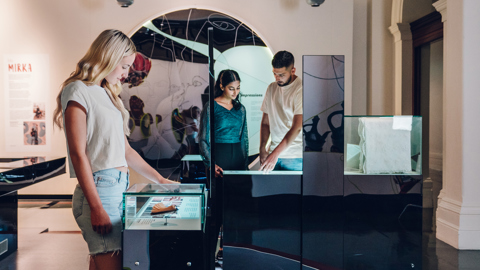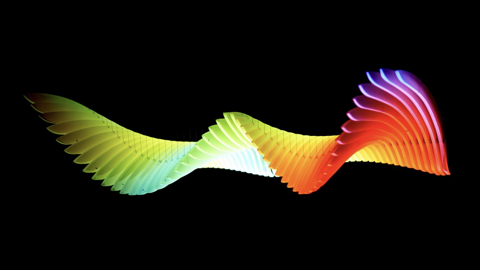Miles Steele, Torn Apart
Transcript
‘Torn Apart’ is a ‘point and click’ adventure videogame with fantasy elements set within one ever-changing room. The player takes on the point of view of ‘Ronnie’ – an interdimensional traveller who is stuck in a collapsing universe and must make the hard decision of saving the world or escaping to get back home alive. In his accompanying 63-page folio, Miles sets out his inspirations: games by Rusty Lake (especially ‘Cube Escape Paradox’) as well as ‘The Forever Labyrinth’ and ‘Viewfinder’. An initial storyboard experiment settled on a flow-chart format as the most suitable for this project, using red pen to map out movement between ‘rooms’, and blue pen to assign sound effects. After more testing with an early stage game, Miles ultimately produced a game with a ‘three act structure’, starting out in a study. Drawing on the aforementioned inspirations, the visuals of the game vary from graphite sketched on lined paper, ultimately blending with watercolour illustrations and photography to demonstrate the collapse of reality and the world around. A third graphic style is used to portray Ronnie and the character of Pip – Ronnie’s best friend who can be contacted throughout the game to get hints by using Ronnie’s teleportation/communication device. Ronnie and Pip are rendered in a brightly-coloured, cartoonish art style to show their innocence. Ronnie has pink flesh, lilac and violet hair and dungarees and a green top and neckerchief. He wears a bootie on one foot. Pip has orange flesh and bubble-like pigtails, one yellow, the other blue. She wears a blue dress and cape. Both Pip and Ronnie have a nose in the shape of the letter ‘c’, 2 oval eyes of a single colour (violet for Ronnie, blue for Pip) and no mouth.
Miles acknowledges the need for the game’s audience to suspend their disbelief in order to believe the 2D images depict a 3D space and to empathise with an illustrated character.
A sketched storyboard within the folio maps out the objects in the study (a fireplace, a cupboard, a bookshelf, a series of levers, a painting/certificate, a clock, a desk and a birdcage). The final version renders the study in 2D graphite with dashes of colour with an overlay of the ‘Guided User Interface’: this includes blue boxes with Pip’s face on and instructions on how to receive tips, a satchel icon in a green box which indicates items collected, and a green settings box, where the user can toggle the relative volumes of the spoken narrative/dialogue and the music. Pop-up blue boxes offer the player choice about which course to take at each decision point (e.g. ‘what are you going to do: Save the World? Escape?).
Mile’s folio also documents the script and voice actors commissioned, and the permissions gained to use copyrighted music. The final game was housed on the itchy.io platform.






